Last updated on March 24th, 2025 at 11:32 am
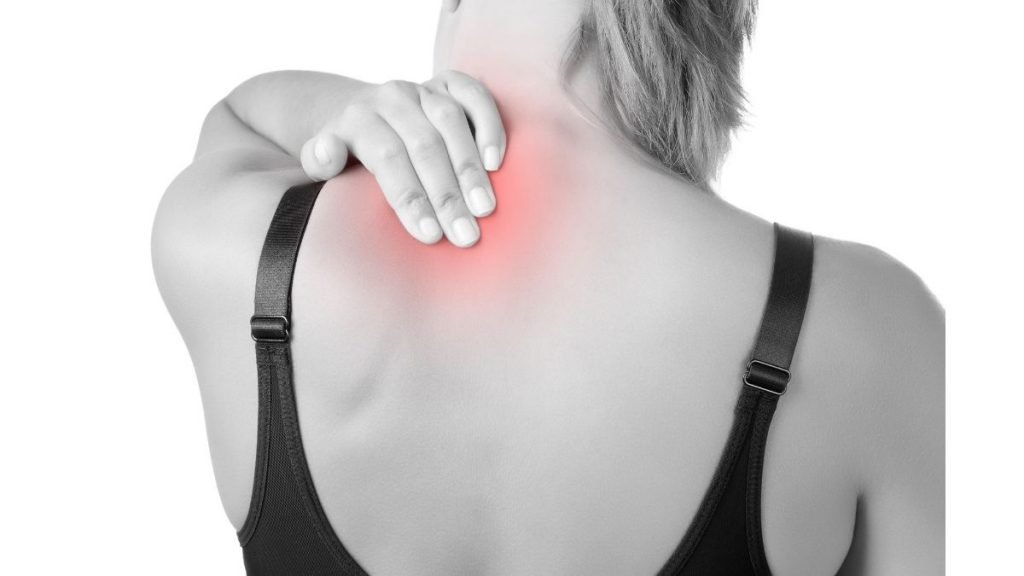
Many of us may have experienced dull and achy pain in our upper back, which can be so severe that it can make our whole day miserable and affect our ability to focus on work.
The region of our body just below the neck, between the two shoulder blades, is known as the upper back. Here we sometimes experience tremendous pain that can spread throughout the area.
It’s a dull and aching pain that is difficult to pinpoint. However, you don’t need to worry because with some easy tips such as using a tennis ball and stretching exercises, you can get rid of the pain completely. If you are experiencing upper back pain, then read this article until the end to learn more.
Easy back pain relief tips and home remedies
The number one reason for upper back pain is the wrong posture; when we work on our mobile in the wrong posture, we bend our necks and continuously stare at the screen. It has become a very common practice among young, even older people that are constantly engaged in mobile in this way.
So, bending forward, working on a computer continuously or normally if someone has a forward neck posture, as you can see in the figure, this wrong posture if you maintain it regularly, then you are sure to have an upper back pain issue.
As we adopt this wrong posture, over time, a band formation occurs in our upper back muscles, also known as trigger points or muscle knots. These trigger points may also form in the arm and elbow region and can lead to pain similar to tennis elbow pain.
If you want to know more about muscle knots or the trigger point, then visit and read one of my articles on it, “What are muscle knots? how to get rid of muscle knots”.
Because of muscle knots, stiffness and tightness develop in upper back muscles, around our spine, or the vertebral bones of the thoracic area. Due to the combined effect of all these things, terrible pain arises.
1) Upper back Stretching in standing
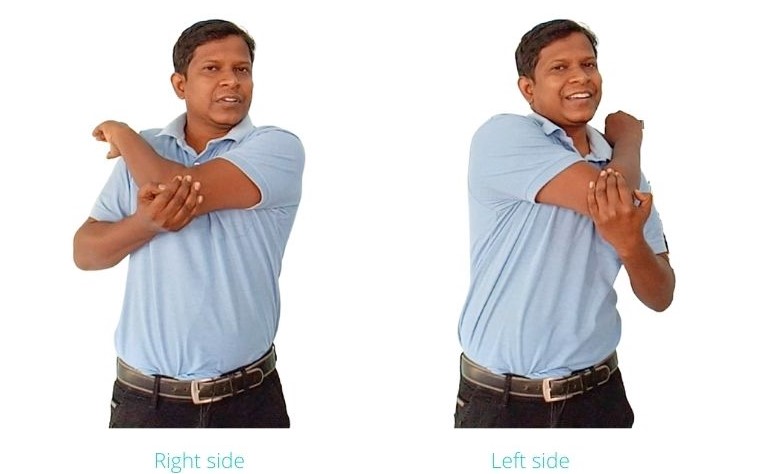
Our first exercise is stretching of shoulder blade muscles. It can be an effective way to alleviate upper right-side back pain. This exercise can be done while sitting, standing, or lying down.
Let us first start the upper back stretching in a sitting or standing position.
- Begin by sitting or standing in a comfortable position.
- Bring your left arm or forearm before your chest to stretch the left side.
- Next, take your right hand and place it behind your left elbow. Gently pull your left arm towards your chest until you feel a stretch in your shoulder blade area.
- Hold this position for at least 60 seconds, then slowly release the tension.
- Repeat this stretch on the right side by holding your right elbow with your left hand and pulling it towards your chest.
- Again, hold for 60 seconds and release.
- While performing this exercise, you may feel a stretch behind your shoulder blade area.
It is safe to do this stretch anytime and for any number of times. You can even do it while sitting at your desk at work. Remember to take breaks and stretch periodically throughout the day to help alleviate upper right-side back pain.
2) Back pain on upper right, left side stretches in lying
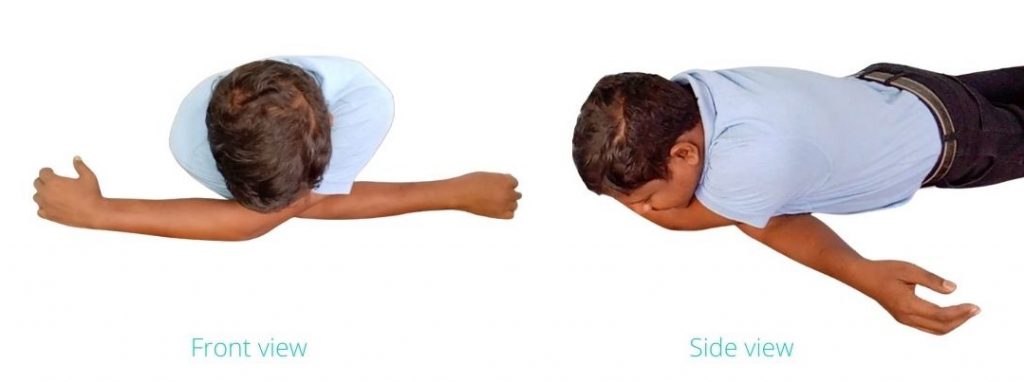
Our next exercise is also upper back muscle stretching exercise. It is performed in lying position. Here are step by step breakdown to perform this exercise:
- Find a comfortable and flat surface to lie down on, such as a yoga mat or a carpeted floor.
- Lie down on your stomach and extend your arms in front of you, palms facing down.
- Place your elbows on the ground, just below your chest, and cross them over each other.
- Slowly lift your upper body off the ground, using your arms for support, until you feel a gentle stretch in your upper back.
- Hold this position for about 1 minute, taking deep breaths in and out.
- Release the stretch and lower your body back down to the ground.
- Repeat the exercise once or twice in the morning and in the evening for best results.
3) Spine mobilization for instant upper back pain relief
Along with this, our bones of the spine in the thoracic area of the upper back, which we call vertebral bone, a stiffness develops here.
So, to release this stiffness, we have to bring a movement to that particular point; only the movement in that area will help release the stiffness.
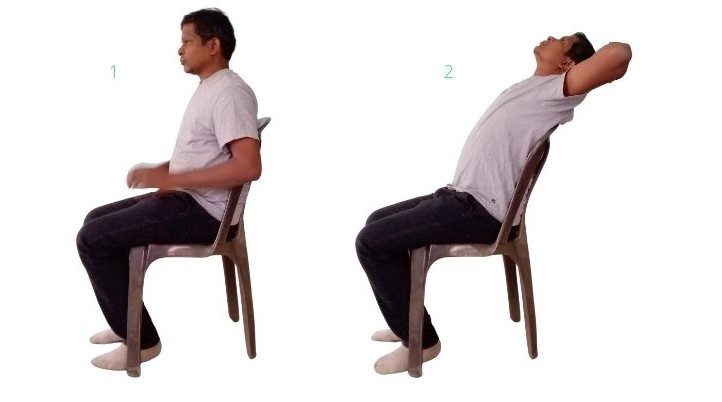
To perform this exercise:
- Find a chair with a low backrest height and ensure it is stable and safe.
- Sit on the chair and place both hands behind your neck, grasping them together. Ensure that you have a good grip.
- Next, lean backwards and bend your upper body completely.
- Hold this position for a few seconds, then slowly come forward and sit upright.
- Repeat this exercise several times, leaning backwards and forward each time.
While performing this exercise, you may hear some crackling or popping sounds, which is normal and nothing to worry about. It occurs when the stiff and jam joint gets released. It is important to note that safety is crucial while performing any exercise.
If you are elderly or have health concerns, always consult a doctor or professional trainer before exercising. Also, make sure that someone is around to assist you during the exercise to avoid any accidents or injuries.
4) Spine mobilization in lying

To release stiffness in our vertebral bone, we can also do the following exercise in a lying position:
- Lie down on your side. It can be any side, depending on your preference.
- Bend your hip and knee on the side you’re lying on, and bend them completely, as shown in the figure.
- Place your other hand on the floor in front of you for support, and use your other arm to hold your bent knee and pull it closer to your chest.
- As you exhale, rotate and move your upper trunk slowly towards the opposite direction of the bent knee.
- Hold the position for 2-3 deep breaths.
- As you inhale, slowly return to the starting position.
- Repeat the exercise 2-3 times on each side.
This exercise helps to localise the rotation movement exactly at the upper back area and its vertebral joints, which can help to release stiffness and tension in that area. Remember to move slowly and gently, and don’t push yourself beyond your comfort level.
5) Tennis ball self-massage for instant relief from upper back pain
To perform this exercise, you will need a tennis ball which can be found at any nearby market or sports store.
- Lie down on your back and place the tennis ball underneath your upper back where you are experiencing pain or tension.
- Once the ball is in place, start moving your body slowly to roll the ball over all the painful points in that area. You can adjust the amount of pressure by changing the position of your body.
This technique is a form of self-massage that can help relax the stiff vertebral bone and release muscle trigger points. You will feel almost immediate relief from the discomfort you were experiencing.
6) Use handheld massager
Finally, for upper left side back pain, I would also like to recommend a handheld massager that can help to release the muscle knots and other muscle stiffness around the upper back.
The massager employs a deep tissue massage effect that is incredibly effective in releasing knots and stiffness in the muscles around the upper back.
What’s more, the massager comes with eight different massage heads, so you can choose the one best suited to your needs. This is especially useful if you have other areas of joint pain that you want to address.
Using the massager for targeted massage can improve your overall comfort and mobility.
- Extended Handle for Hard-to-Reach Area Massage:Still wondering how to get a relaxing back or waist massage on your own? …
- Soothing Massages with Less Shocks:Featuring an almost 90° ergonomic arc and advanced shock-absorbing technology, the ma…
- Long-Lasting Massages after Each Charge:Equipped with built-in 1800mAh batteries, our massage gun delivers extended oper…

Other tips
Maintaining a good posture is vital for the long-term effect of all the tips discussed here. We must adopt a correct Desktop Ergonomics posture when sitting for a desk job in front of the computer. If you have an issue with forwarding head posture, I have already published an article on it, visit this link for detailed information.
If you have severe pain, first, I would recommend controlling that pain and then proceeding with exercises. For this, apply any good pain balm and leave it for 10 minutes for the body to absorb it.
After 10 minutes, apply heat treatment over that area; you may use an infrared lamp or electric heating pads as per convenience. You can also use a TENS unit that helps improve the blood circulation around the upper back region.
Keep Reading: How Can I Stop Neck Pain When Studying?
The author is a physiotherapist who has been practising for the last 17 years. He holds a Bachelor's in Physiotherapy (BPT) from SVNIRTAR (Swami Vivekananda National Institute of Rehabilitation and Research), one of the prestigious physiotherapy schools in India.
Whatever he learns dealing with his patient, he shares it with the world through blogs and e-books. He also owns a YouTube channel, "Sunit Physiotherapist" with over 8 lakh active subscribers. Here, he shares everything he gets to learn serving the patient.

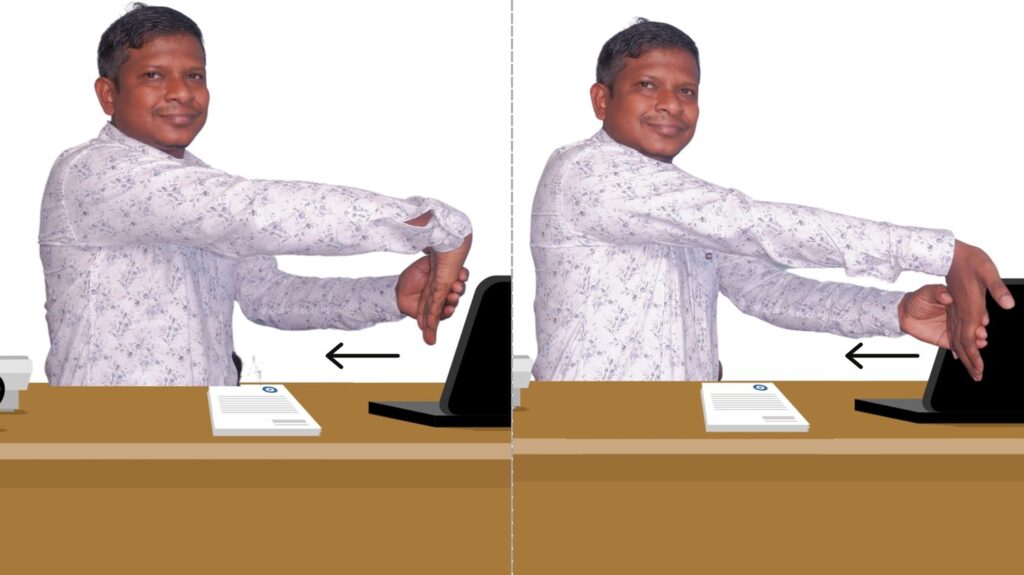

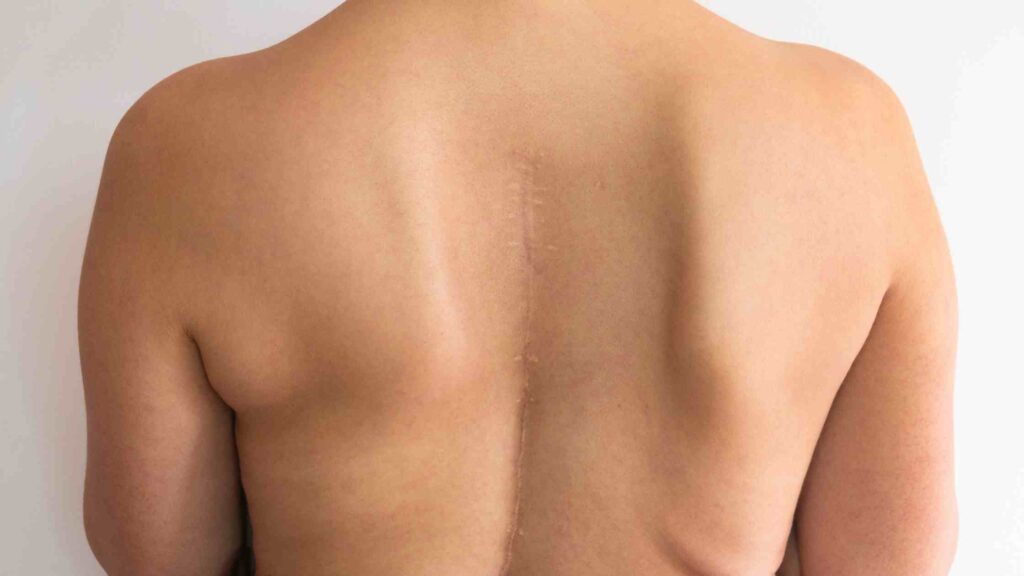
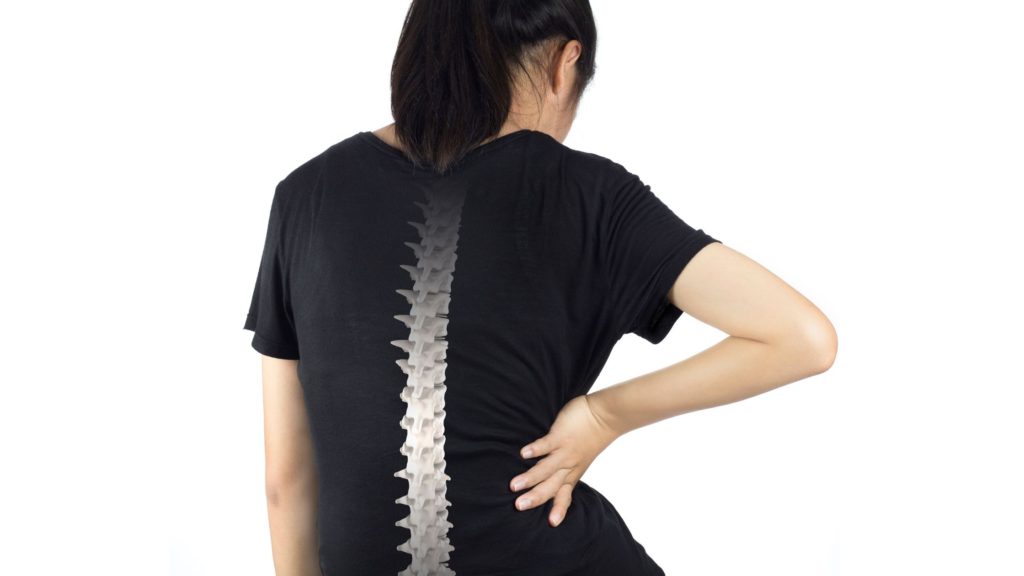
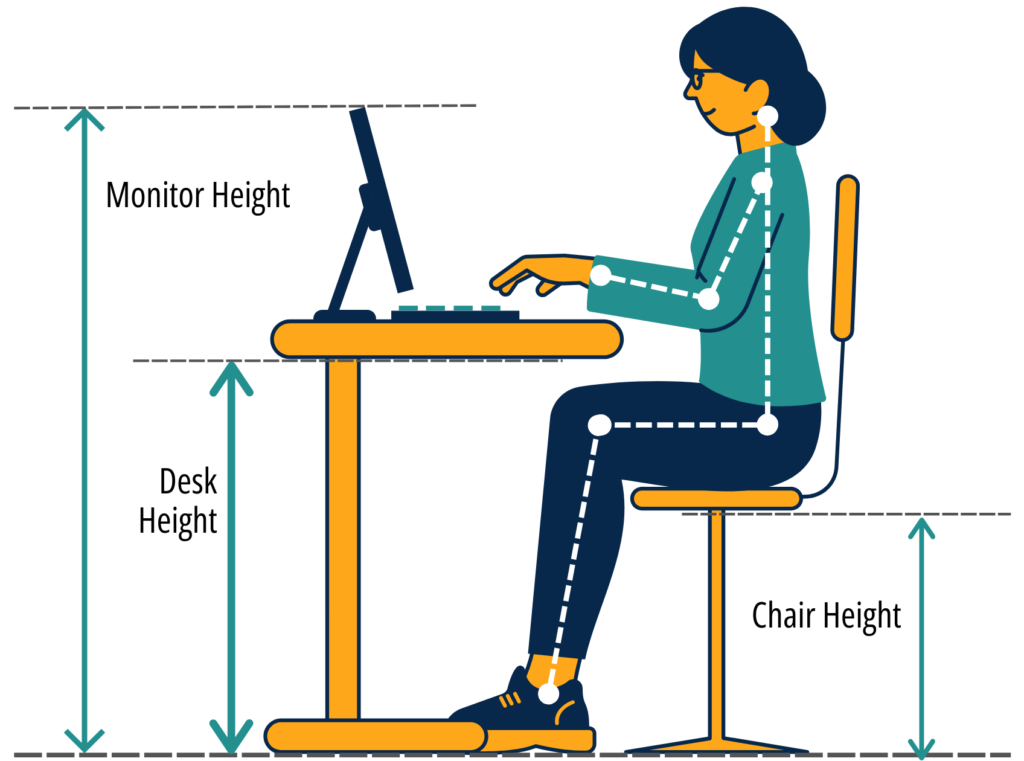
Pingback: Desktop Ergonomics, These 5 Adjustment Can Save You - Physiosunit
Pingback: To Fix Reverse Cervical Lordosis Follow These 5 Easy Exercises - Physiosunit
Pingback: Quickly Fix Achy muscle of Back, Leg, Calf| Follow These 7 Easy Stretching - Physiosunit
Pingback: 12 Easy Chair Exercises for Seniors for Healthy Life (with Video) - Physiosunit